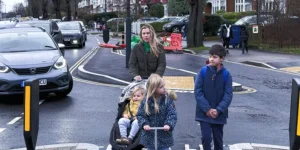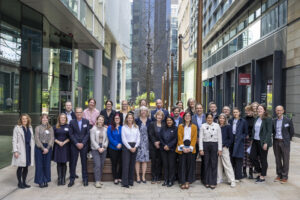Ananya Roy, a senior health scientist at Environmental Defense Fund and Elizabeth Moses, associate, Environmental Democracy Practice, Governance Center at WRI explain why climate change and air pollution is not only an issue of overlapping emission sources, environmental and cumulative health impacts; it is also an issue of justice and human rights.
We are seeing the beginnings of the impact of unchecked emissions globally.
Extreme rainfall and flooding in India, China and Germany have destroyed infrastructure and homes. Heatwaves have sent temperatures soaring above 40 o C for weeks, causing heat exhaustion and mortality.
Wildfires ravage forests and smoke drifts across continents painting skies orange and grey, triggering asthma attacks and air quality alerts in cities.
The toll of death and destruction from these capture headlines adding to the steady drum roll of disease and death due to air pollution year after year.
In every instance the most vulnerable in our societies: children, women, the elderly, those with existing disease and marginalized populations – Indigenous People, those belonging to ethnic or racial minorities and low-income communities, bear a disproportionate burden.
Although often treated as separate issues, the interlink between climate change and air pollution is not only an issue of overlapping emission sources, environmental and cumulative health impacts; it is also an issue of justice and human rights.
Science repeatedly documents that at every geographic scale, the burden from both air pollution and climate change is not borne equally or fairly between or within countries, states, or cities. For example,
- The majority of the 10 countries hit hardest by climate-fueled extreme weather from 1999–2018 are also on the list of the world’s least developed nations, with small island developing states 150 times more likely to be displaced by extreme weather disasters than communities in Europe. Climate change has made richer countries richer and poor countries poorer at the same time that air inequality between wealthy and poor countries has grown.
- In the United States, people of colour are systematically and disproportionately exposed to higher particulate air pollution consistently across states, urban or rural areas, income status or source sector. And within cities, certain neighbourhoods, often home to predominantly black populations, have double the risk of children developing asthma due to exposure to traffic air pollution in comparison to other areas.
- Over 3 billion people, many in Africa and Asia, still use solid fuels for household energy needs contributing to climate forcing emissions. It is also a story of households, days spent foraging, children at work, gender disparities, women at risk and shut out and debilitating disease and lives lost prematurely. In 2019, 3 million deaths were attributed to household air pollution.
- In Europe WHO documented that 20% of self-reported health disparities were connected to a lack of green space, air pollution, and neighbourhood conditions. Where you live matters and inequalities are a driver of an “environmental underclass with an increased likelihood of risk exposure and negative health impacts.”
But remedies laser-focused on reducing emissions often fail to consider the disparate distribution of climate and air pollution impacts.
Policies designed to transition to a greener, lower emission, less polluting options run the risk of exacerbating economic inequities.
Concerns that carbon pricing and trading widen existing inequalities by creating or worsening ‘sacrifice zones,’ as well as protests in France and Australia over carbon tax proposals highlight the danger of divorcing climate policies from the socio-economic context in which we live.
The growing global environmental justice and climate justice movements have helped raise public awareness around historic and ongoing structural discrimination.
These have resulted in socio-political and information systems that, at best, mask, perpetuate and, at worst, amplify inequalities, concentrating climate and pollution risks in already overburdened communities.
Stronger partnerships and new research is needed to understand the root causes of the existing patterns, monitor exposure impacts and identify solutions that reduce emissions, address disparities and build thriving communities. We need systems that invest in underserved and marginalized communities and engage them in the design and implementation of policies.
Locally, community-based participatory research, done with the community, for the community, can document inequities and foster corrective action that addresses historic harms and disparities.
It can help energize grassroots advocacy and provide new forums to engage decision-makers and researchers about environmental justice concerns. This combined with robust science and data transparency can promote trust, accountability, and build political will and capacity to take action.
The new USAID Clean Air Catalyst initiative, led by World Resources Institute and Environmental Defense Fund, is working to bring together cutting edge science, data to action frameworks with community and policy stakeholder partnerships in Indore, India and Jakarta, Indonesia.
Through this, the CAC hopes to build shared awareness of climate and pollution sources that contribute to climate, air pollution and health disparities by focusing on less recognized sources that disproportionately affect lower-income or marginalized communities.
Through a partnership with the community, civil society, policy and scientific stakeholders, the CAC hopes to unlock solutions that address air pollution, deliver climate, and development co-benefits and prioritize vulnerable populations and women.

















Leave a Reply